The Art of the Seljuks Period in Anatolia (1081–1307)
Following their conquest of Baghdad in 1055, the Seljuq dynasty, descendants of the Central Asian Turkic Oghuz tribe, soon established hegemony over most of West Asia, including present-day Iran, Iraq, and Syria. Raids on the Byzantine frontier eventually led to the Battle of Manzikert (modern Malazgirt in eastern Turkey) in 1071 and the resulting Seljuq victory opened Anatolia to Turkic settlement. A branch of the Seljuqs assumed rule from Nicaea (Iznik) in northwestern Anatolia (1078–81) and became known as the Seljuqs of Rum (“Rome”), referring to the Roman Byzantine past of the Seljuq territories. Notwithstanding the advance of Crusader armies, battles against the Byzantines, and conflicts with neighboring rival Turkic principalities, the Seljuqs were able to establish uncontested authority following the Latin conquest of Constantinople during the Fourth Crusade (1204). The first half of the thirteenth century corresponds to the zenith of Seljuq power in Anatolia until they were defeated by the Ilkhanids, the Mongol dynasty ruling in Iran, at the Battle of Köse Dagh (1243), after which the Seljuqs became Mongol vassals. Especially during the reign of ‘Ala’ al-Din Kay-Qubadh (r. 1220–37), the Seljuq realm witnessed tremendous commercial, artistic, and cultural activity, the heart of which was the new Seljuq capital, Konya.
Apart from an earlier brief period of Arab rule in the east, Anatolia was new to Islam, and the Seljuqs were thus among the first to cultivate Islamic art and architecture in these lands. As heirs to the Great Seljuqs of Iran, the sultans of Rum adopted Perso-Islamic traditions and, for the most part, maintained established designs, materials, and techniques in their congregational mosques, madrasas (theological schools), mausolea, caravanserais, and palaces. The ‘Ala’ al-Din Mosque (1156–1220), the Karatay (1252) and Ince Minareli (1258) madrasas in Konya, the Sifahiye (1217–18) and Gök madrasas (1271) in Sivas, the Great Mosque and Hospital in Divrigi (1228–29), the Khuand Khatun complex in Kayseri (1237–38), and the Cifte Minareli Madrasa in Erzurum (1253) are among the important surviving examples of monumental Anatolian Seljuq architecture. In the arts, continued use of luster- and overglaze-painted tiles, as well as creations in wood and metal, are especially noteworthy.
Along with Perso-Islamic traditions, however, Anatolia had a strong Byzantine and Armenian Christian heritage, which now intermingled with Central Asian Turkic nomadic, northern Mesopotamian, and Crusader cultures. The exchange and synthesis of these different traditions is vividly reflected in Seljuq architecture and art. For instance, Gök Madrasa features carved stone, typical of Armenian architecture, alongside brick, a common material in Iran and Central Asia.
Suzan Yalman.metmuseum
-
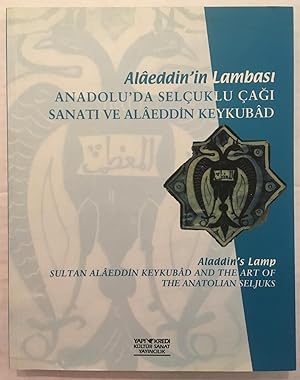 Alâeddin'in lambası : Anadolu'da Selçuklu çağı sanatı ve Alâeddin Keykubâd = Aladdin's lamp : Sultan Alâeddin Keykubâd and the art of the Anatolian Seljuks age
by
Call Number: N7163 .A423 2001ISBN: 9753631472Publication Date: 2001This catalogue has been prepared by Yapı Kredi Cultural Activities, Arts and Publishing and the General Directorate of Monuments and Museums of the Ministry of Culture on the occasion of the exhibition held between 3 October-28 December 2001 at Yapı Kredi Vedat Nedim Tör Museum.
Alâeddin'in lambası : Anadolu'da Selçuklu çağı sanatı ve Alâeddin Keykubâd = Aladdin's lamp : Sultan Alâeddin Keykubâd and the art of the Anatolian Seljuks age
by
Call Number: N7163 .A423 2001ISBN: 9753631472Publication Date: 2001This catalogue has been prepared by Yapı Kredi Cultural Activities, Arts and Publishing and the General Directorate of Monuments and Museums of the Ministry of Culture on the occasion of the exhibition held between 3 October-28 December 2001 at Yapı Kredi Vedat Nedim Tör Museum. -
Rum Seljuq Architecture, 1170-1220 by
Call Number: NA1363 .M33 2017ISBN: 9781474417471Publication Date: 2017-01-01This lavishly illustrated volume presents the major surviving monuments of the early period of the Rum Seljuqs, the first major Muslim dynasty to rule Anatolia. A much-needed overview of the political history of the dynasty provides the context for the study of the built environment which follows. The book addresses the most significant monuments from across the region: a palace, a minaret and a hospital are studied in detail, along with an overview of the decorative portals attached to a wide array of different building types. The case studies are used to demonstrate the key themes and processes of architectural synthesis and development that were under way at the time, and how they reflect the broader society. -
 Anadolu Selçuklu kervansarayları
by
Call Number: NA7850.T9 E73 2011Anadolu Selçuklu Devleti zamanında inşa edilmiş kervansaray ve ticaret yolları, sanat tarihçisi Prof. Dr. Osman Eravşar tarafından incelendi ve "Anadolu Selçuklu Kervansarayları" ismiyle kitaplaştı. Kitap, Konya Selçuklu Belediyesi tarafından da yayımlanmış. Nerede hangi kervansaray var, tarihi ne zamana dayanır, bugüne kadar nasıl ulaşmış, bir bir anlatılmış. Bugüne kalanlar, restorasyona girenler, izi olup da kendisi olmayan bütün kervansaraylarla ilgili bilgilerse eksik bırakılmamış.Kitap, görsel bakımdan da epey zengin. Kervansaraylar, bugünkü haliyle İbrahim Dıvarcı, Ahmet Kuş ve Fevzi Şimşek tarafından fotoğraflanmış ve kitapta yerini almış. Ayrıca, Anadolu'daki tüm kervansaray ve ticaret yolları zihinlerde oturması için haritalandırılmış. Kitapta, Anadolu Selçukluları tarafından yapılmış 76 kervansaray 19'u üzerinden anlatılmış.
Anadolu Selçuklu kervansarayları
by
Call Number: NA7850.T9 E73 2011Anadolu Selçuklu Devleti zamanında inşa edilmiş kervansaray ve ticaret yolları, sanat tarihçisi Prof. Dr. Osman Eravşar tarafından incelendi ve "Anadolu Selçuklu Kervansarayları" ismiyle kitaplaştı. Kitap, Konya Selçuklu Belediyesi tarafından da yayımlanmış. Nerede hangi kervansaray var, tarihi ne zamana dayanır, bugüne kadar nasıl ulaşmış, bir bir anlatılmış. Bugüne kalanlar, restorasyona girenler, izi olup da kendisi olmayan bütün kervansaraylarla ilgili bilgilerse eksik bırakılmamış.Kitap, görsel bakımdan da epey zengin. Kervansaraylar, bugünkü haliyle İbrahim Dıvarcı, Ahmet Kuş ve Fevzi Şimşek tarafından fotoğraflanmış ve kitapta yerini almış. Ayrıca, Anadolu'daki tüm kervansaray ve ticaret yolları zihinlerde oturması için haritalandırılmış. Kitapta, Anadolu Selçukluları tarafından yapılmış 76 kervansaray 19'u üzerinden anlatılmış. -
The Museum of Turkish and Islamic Arts by
Call Number: N3690.T8 S24 2009ISBN: 9781935295020Publication Date: 2009-09-16Exhibiting the largest hand-made carpet col-lection in the world (1,700 pieces), the Mu-seum of Turkish and Islamic Arts is a unique place to visit in Istanbul, Turkey. This album presents the best samples from among a large inventory of forty thousand pieces of Islamic art that represent not only Seljuk and Ottoman empires but also Umayyads, Abbasids, Andalusia, Safavid Empire, and other Muslim states and civilisations across North Africa and Caucasia. Alongside carpet exhibition, the museum hosts 13,000 man-uscripts, a beautiful collection of wooden works, tiles, stone pieces, and other samples of Islamic decorative arts. -
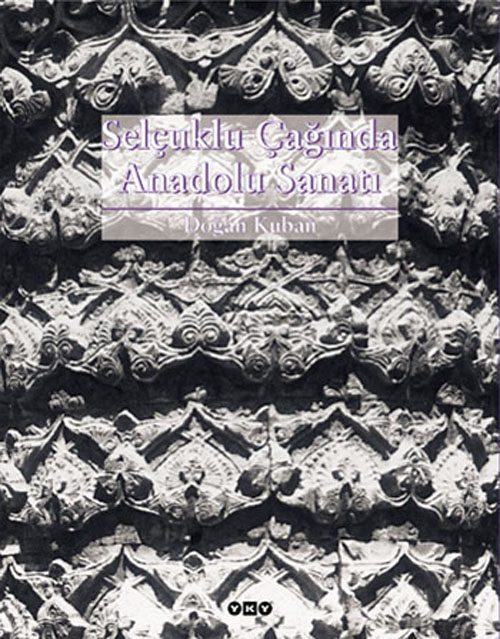 Selçuklu çağında Anadolu sanatı
by
Call Number: N7163 .K83 2008ISBN: 97897508030941071’deki Malazgirt Savaşı’ndan sonra çözülmeye başlayan Bizans İmparatorluğu karşısında Batı’ya göçen Türkmenler, Anadolu’ya, yüzyıllara yayılan bir süreç içinde egemen oldular. Yazılı tarihte 1071 ile Konya Selçuklu Devleti’nin sonu olan 1308 tarihleri arasında yer alan yaklaşık üç yüzyıllık bu süreç, karmaşık, değişken ve dinamiktir. Bu süreçte göçer Türkmenlerle yerleşik halk, “birlikte” yaşamlarında birbirlerinin kültürünü özümseyerek son derece özgün bir kültür ortamı yarattılar. Mimariden küçük sanatlara kadar bu ortamda yaratılan bütün maddi kültür ürünleri, karmaşık sürecin özgün karakterini en iyi anlatan belgelerdir. Konya, Kayseri, Sivas, Divriği, Erzurum, Van, Diyarbakır, Mardin gibi kentlerde gözlenen çeşitlilik, Selçuklu Çağı’nın kültürel zenginliğini, yerel gelişmelerin çokkökenliliğini ve Anadolu’nun nasıl bir kaynayan pota olduğunu sanat ürünlerindeki yansımalarıyla açıkça sergiler. Selçuklu Çağında Anadolu Sanatı, dönemin sanatını ve ürünlerini dönemin politik, toplumsal ve ekonomik karışıklıklarıyla birlikte yorumlayan bir yapıt. Prof. Dr. Rüçhan Arık, Prof. Dr. Ömür Bakırer, Doç. Dr. Can Binan, Doç. Dr. Bekir Deniz, Prof. Dr. Aynur Durukan, Dr. Ülker Erginsoy, Dr. Yegân Kâhya, Dr. Kâni Kuzucular, Prof. Dr. Ayla Ödekan, Prof. Dr. Semra Ögel, Prof. Dr. Gönül Öney, Doç. Dr. Nadide Seçkin, Dr. Gülsün Tanyeli, Prof. Dr. Hüseyin Rahmi Ünal, Prof. Dr. Ayşıl Tükel Yavuz’un katkılarıyla.
Selçuklu çağında Anadolu sanatı
by
Call Number: N7163 .K83 2008ISBN: 97897508030941071’deki Malazgirt Savaşı’ndan sonra çözülmeye başlayan Bizans İmparatorluğu karşısında Batı’ya göçen Türkmenler, Anadolu’ya, yüzyıllara yayılan bir süreç içinde egemen oldular. Yazılı tarihte 1071 ile Konya Selçuklu Devleti’nin sonu olan 1308 tarihleri arasında yer alan yaklaşık üç yüzyıllık bu süreç, karmaşık, değişken ve dinamiktir. Bu süreçte göçer Türkmenlerle yerleşik halk, “birlikte” yaşamlarında birbirlerinin kültürünü özümseyerek son derece özgün bir kültür ortamı yarattılar. Mimariden küçük sanatlara kadar bu ortamda yaratılan bütün maddi kültür ürünleri, karmaşık sürecin özgün karakterini en iyi anlatan belgelerdir. Konya, Kayseri, Sivas, Divriği, Erzurum, Van, Diyarbakır, Mardin gibi kentlerde gözlenen çeşitlilik, Selçuklu Çağı’nın kültürel zenginliğini, yerel gelişmelerin çokkökenliliğini ve Anadolu’nun nasıl bir kaynayan pota olduğunu sanat ürünlerindeki yansımalarıyla açıkça sergiler. Selçuklu Çağında Anadolu Sanatı, dönemin sanatını ve ürünlerini dönemin politik, toplumsal ve ekonomik karışıklıklarıyla birlikte yorumlayan bir yapıt. Prof. Dr. Rüçhan Arık, Prof. Dr. Ömür Bakırer, Doç. Dr. Can Binan, Doç. Dr. Bekir Deniz, Prof. Dr. Aynur Durukan, Dr. Ülker Erginsoy, Dr. Yegân Kâhya, Dr. Kâni Kuzucular, Prof. Dr. Ayla Ödekan, Prof. Dr. Semra Ögel, Prof. Dr. Gönül Öney, Doç. Dr. Nadide Seçkin, Dr. Gülsün Tanyeli, Prof. Dr. Hüseyin Rahmi Ünal, Prof. Dr. Ayşıl Tükel Yavuz’un katkılarıyla. -
 Anadolu Selçuklu Bahçeleri (Alaiyye / Alanya)
by
Call Number: SB458.6 R4320 2008ISBN: 9789757622850Anadolu Selçuklu hanedanının kentlerine ait, sunulan art bölgelerin parçasını oluşturan, sultanların sahip olduğu bahçeler, söz konusu zenginliğin bir kısmını oluşturmuştur.11. yüzyılın sonundan itibaren Anadolu'da bulunan Selçuklular, yalnızca 13. yüzyılın ilk yarısında, yüzyıllardır nüfusu kırılmış ve savaşlarla bölünmüş bir bölgedeki toplumun temellerini oluşturmak için gerekli olan istikrarı kurmuştur.Orta çağ döneminde bahçe geleneği (11. yüzyıldan 13. yüzyıla) önemlidir. Bu kısmen önceki vesonraki yüzyıllarda İslami bahçe geleneğinin fazlasıyla ünlü olmasından dolayıdır. Öncesinde Irak'ta halifeye ait Samarra bahçeleri ve İspanya'daki Madinat al-Zahra, sonrasındaki Timur'un Semerkant ve Herat'ı, Safavi Isfahan ve Mughal Lahore ve Agra ile birlikte, karşılaştırma yapılabilecek, bu dönemden ileriki dönemlere çeşitli bağlantılar sağlayacak malzeme boldur. Okuyucu, bu eserde bu bağlantıların takip edilmediğini fark edecektir. Bu bir dereceye kadar, söz konusu dönemde Akdeniz'i çevreleyen küçük devletler tarafından geliştirilmiş olan, ortaçağ bahçesinin kendine has doğasından kaynaklanmaktadır.İslami bahçe geleneğinin daha sonraki gelişmelerini incelemekten bilinçli olarak kaçınılmıştır. Okuyucunun, daha iyi korunmuş ve belgelenmiş sonraki bahçelerin gölgesi olmadan, Anadolu Selçuklu Bahçeleri üzerinde ilk kez yoğunlaşabilecektir.
Anadolu Selçuklu Bahçeleri (Alaiyye / Alanya)
by
Call Number: SB458.6 R4320 2008ISBN: 9789757622850Anadolu Selçuklu hanedanının kentlerine ait, sunulan art bölgelerin parçasını oluşturan, sultanların sahip olduğu bahçeler, söz konusu zenginliğin bir kısmını oluşturmuştur.11. yüzyılın sonundan itibaren Anadolu'da bulunan Selçuklular, yalnızca 13. yüzyılın ilk yarısında, yüzyıllardır nüfusu kırılmış ve savaşlarla bölünmüş bir bölgedeki toplumun temellerini oluşturmak için gerekli olan istikrarı kurmuştur.Orta çağ döneminde bahçe geleneği (11. yüzyıldan 13. yüzyıla) önemlidir. Bu kısmen önceki vesonraki yüzyıllarda İslami bahçe geleneğinin fazlasıyla ünlü olmasından dolayıdır. Öncesinde Irak'ta halifeye ait Samarra bahçeleri ve İspanya'daki Madinat al-Zahra, sonrasındaki Timur'un Semerkant ve Herat'ı, Safavi Isfahan ve Mughal Lahore ve Agra ile birlikte, karşılaştırma yapılabilecek, bu dönemden ileriki dönemlere çeşitli bağlantılar sağlayacak malzeme boldur. Okuyucu, bu eserde bu bağlantıların takip edilmediğini fark edecektir. Bu bir dereceye kadar, söz konusu dönemde Akdeniz'i çevreleyen küçük devletler tarafından geliştirilmiş olan, ortaçağ bahçesinin kendine has doğasından kaynaklanmaktadır.İslami bahçe geleneğinin daha sonraki gelişmelerini incelemekten bilinçli olarak kaçınılmıştır. Okuyucunun, daha iyi korunmuş ve belgelenmiş sonraki bahçelerin gölgesi olmadan, Anadolu Selçuklu Bahçeleri üzerinde ilk kez yoğunlaşabilecektir. -
 Kubad Abad : Selçuklu saray ve çinileri
by
Call Number: NA1371.K6 A75 2000ISBN: 9754582653Bu çalışma, İş Bankası Kültür Yayınları'nın hem araştırmalara zemin hazırlamak hem de bilimin mesajını toplum katlarına yaymak için yayımladığı bir yapıttır. Prof. Dr. Rüçhan Arık çalışmasında, Anadolu Selçuk Devleti'nin üç önemli saray yapısı arasında, bugün büyük bölümü ayakta kalan Kubad Abad Sarayı'nın "keşfi ve kazı serüveni"ni anlatıyor. Beyşehir gölü kıyısında yükselen Kubad Abad Sarayı, planı bilinen tek Selçuklu Sarayı olma özelliğini taşıyor. Prof. Dr. Arık'ın sarayın tarihçesi, yapısı ve çevresiyle ilgili olarak yaptığı çalışmalar, arkeoloji ve sanat tarihimiz açısından çok önemli. Özellikle Selçuk el sanatları konusundaki bulguları; başta figürlü çiniler olmak üzere, cam işçiliğinin değerli örnekleriyle, Anadolu Ortaçağı'na bir ışık hüzmesi düşürüyor.
Kubad Abad : Selçuklu saray ve çinileri
by
Call Number: NA1371.K6 A75 2000ISBN: 9754582653Bu çalışma, İş Bankası Kültür Yayınları'nın hem araştırmalara zemin hazırlamak hem de bilimin mesajını toplum katlarına yaymak için yayımladığı bir yapıttır. Prof. Dr. Rüçhan Arık çalışmasında, Anadolu Selçuk Devleti'nin üç önemli saray yapısı arasında, bugün büyük bölümü ayakta kalan Kubad Abad Sarayı'nın "keşfi ve kazı serüveni"ni anlatıyor. Beyşehir gölü kıyısında yükselen Kubad Abad Sarayı, planı bilinen tek Selçuklu Sarayı olma özelliğini taşıyor. Prof. Dr. Arık'ın sarayın tarihçesi, yapısı ve çevresiyle ilgili olarak yaptığı çalışmalar, arkeoloji ve sanat tarihimiz açısından çok önemli. Özellikle Selçuk el sanatları konusundaki bulguları; başta figürlü çiniler olmak üzere, cam işçiliğinin değerli örnekleriyle, Anadolu Ortaçağı'na bir ışık hüzmesi düşürüyor. -
Landscape and the State in Medieval Anatolia by
Call Number: DR738.5.A43 R43 2000ISBN: 1841710954Publication Date: 2001-02-01This study, focusing on the Rum Seljuk dynasty in thirteenth-century Anatolia, combines local history, geography, art history, and archaeology to examine instances of an only partially understood garden tradition in one corner of the medieval Mediterranean. Gardens, and their architecture, have been neglected, not only because of the paucity of remains, the architecture they inspired was not monumental and relied strongly on a sense of place, and a sensitivity to the landscape. This book attempts to recover a measure of that sense and that landscape, as well as the activities that endowed them with meaning for those that enjoyed them. -
Cities and citadels in Turkey : from the iron age to the Seljuks / Türkiye'de şehirler ve içkaleler : demir çağından Selçuklulara by
Call Number: DR431 .C5820 2016ISBN: 9786055250980urlarla çevrili içkaleler bin yıl boyunca hükümdarlar ve ordular için mesken, seçkinler için de iktidarlarını somutlaştıran kutsal merkezler oldu. Mimarlık tarihinde üzerinde pek durulmayan, genellikle saray ve tapınak mimarisinin gölgesinde kalan "içkale olgusu", bu kitapla hak ettiği ilgiyi görmüş oluyor.Koç Üniversitesi Anadolu Medeniyetleri Araştırma Merkezi (ANAMED) tarafından 2009 yılında düzenlenen sempozyumun ürünü olan Türkiye'de Şehirler ve İçkaleler'de, konunun önde gelen uzmanları, Anadolu ve Mezopotamya coğrafyasında demir çağından 14. yüzyıla kadar inşa edilmiş içkalelere yakından bakıyorlar.Urartulardan Anadolu Selçuklularına, Asurlulardan Bizans'a kadar her devirde şehirlerin hem koruyuculuğunu, hem temsilciliğini, hem de tanıklığını üstlenmiş olan içkaleler, arkeoloji, mimarlık, sanat tarihi ve tarihin kesişiminde kendi hikâyelerini anlatıyorlar. -
 Anadolu Selçukluları'nın taş tezyinatı
by
Call Number: NA3565 .O35 1966"Anadolu Selçukluları'nın Taş Tezyinatı gibi geniş ve az işlenmiş bir konuyu ele almak cesaretini bana veren, her kolunda fevkalade eserlere sahip Selçuklu sanatına karşı duyduğum büyük hayranlık ve bu çok ilgi çekici sahanın daha iyi değerlendirilmesi yolunda, gayet mütevazi de olsa, bir adım atma arzusudur."
Anadolu Selçukluları'nın taş tezyinatı
by
Call Number: NA3565 .O35 1966"Anadolu Selçukluları'nın Taş Tezyinatı gibi geniş ve az işlenmiş bir konuyu ele almak cesaretini bana veren, her kolunda fevkalade eserlere sahip Selçuklu sanatına karşı duyduğum büyük hayranlık ve bu çok ilgi çekici sahanın daha iyi değerlendirilmesi yolunda, gayet mütevazi de olsa, bir adım atma arzusudur." -
 Anadolu'nun Selçuklu çehresi
by
Call Number: NA1363 .O342 1994ISBN: 9757880000Bu çalışma, 1986'da basılan "Anadolu Selçuklu Sanatı Üzerine Görüşler" adlı kitabın esas metni değiştirilmeden renkli resimlerle zenginleştirilmiş halidir. Yeni katılan resimler, Selçuklu sanatının renkli çeşitliliğini sürekli izleten bir tablo olarak tasarlanmıştır.
Anadolu'nun Selçuklu çehresi
by
Call Number: NA1363 .O342 1994ISBN: 9757880000Bu çalışma, 1986'da basılan "Anadolu Selçuklu Sanatı Üzerine Görüşler" adlı kitabın esas metni değiştirilmeden renkli resimlerle zenginleştirilmiş halidir. Yeni katılan resimler, Selçuklu sanatının renkli çeşitliliğini sürekli izleten bir tablo olarak tasarlanmıştır. -
 Anadolu Selçuklu mimari süslemesi ve el sanatları = Architectural decoration and minor arts in Seljuk Anatolian
by
Call Number: NK1270 .O57 1992Bu kitap Anadolu Selçuklularının mimari süsleme ve el sanatlarını bir bütün olarak ele alıp,özlü bir şekilde sunmak amacıyla hazırlanmıştır.Konumuz sadece Anadolu Selçuklu devriyle ilgili oludğundan 14.yy beylikler devrinin çeşitli sanatlarındaki uzantılarına değinilmiştir.
Anadolu Selçuklu mimari süslemesi ve el sanatları = Architectural decoration and minor arts in Seljuk Anatolian
by
Call Number: NK1270 .O57 1992Bu kitap Anadolu Selçuklularının mimari süsleme ve el sanatlarını bir bütün olarak ele alıp,özlü bir şekilde sunmak amacıyla hazırlanmıştır.Konumuz sadece Anadolu Selçuklu devriyle ilgili oludğundan 14.yy beylikler devrinin çeşitli sanatlarındaki uzantılarına değinilmiştir. -
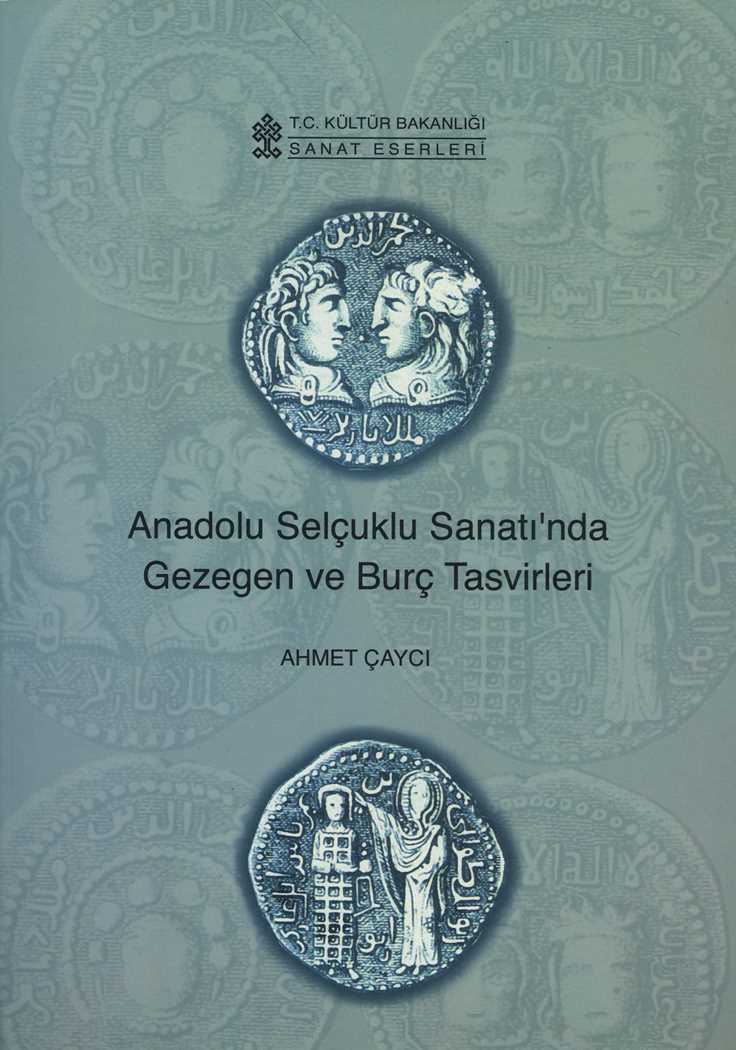 Anadolu Selçuklu sanatında gezegen ve burç tasvirleri
by
Call Number: NA1363 .C39 2002Ahmet Çaycı “Anadolu Selçuklu Sanatı’nda Gezegen ve Burç Tasvirleri” adlı bu çalışmasında; Anadolu Selçuklu süslemeciliği kapsamında yer alan gezegen ve burç tasvirlerinin repertuarı tespit edilerek bu düşünceyi şekillendiren tematik unsurların ne olduğu sorusuna yanıt aramıştır. Bunun gerçekleştirilebilmesi için Antik dönemden başlayıp 14. yüzyıla kadar sürüp gelen göksel veriler değerlendirilmeye tabi tutulmuştur. Bütün bunlar bölümlere ait ana başlıklar ve onların alt başlıkları altında incelenmiştir.
Anadolu Selçuklu sanatında gezegen ve burç tasvirleri
by
Call Number: NA1363 .C39 2002Ahmet Çaycı “Anadolu Selçuklu Sanatı’nda Gezegen ve Burç Tasvirleri” adlı bu çalışmasında; Anadolu Selçuklu süslemeciliği kapsamında yer alan gezegen ve burç tasvirlerinin repertuarı tespit edilerek bu düşünceyi şekillendiren tematik unsurların ne olduğu sorusuna yanıt aramıştır. Bunun gerçekleştirilebilmesi için Antik dönemden başlayıp 14. yüzyıla kadar sürüp gelen göksel veriler değerlendirilmeye tabi tutulmuştur. Bütün bunlar bölümlere ait ana başlıklar ve onların alt başlıkları altında incelenmiştir. -
Anadolu Selçuklu türbeleri by
Call Number: NA6180 .O51 2015Selçuklular Çağında Anadolu'da yoğun bir imar faaliyeti görülür. Ülkenin yeniden imar edilmesi yönündeki bu kesif etkinlik sırasında çok sayıda türbe de yapılmıştır. Türk mimarisinin önemli bir kolunu oluşturan mezar yapıları Anadolu'da güçlü bir gelişme gösterir.Kitapta ele alınan 118 türbe plan ve kesitleri, resimleri, kitabeleri ve bezemeleri ile etraflıca tanıtılmış, tarihlendirmeleri tartışılmıştır. -
Osmanlı Beyliği mimarisinde Anadolu Selçuklu geleneği by
Call Number: NA1364 .K8 2014ISBN: 9789751627452Osmanlı Beyliği mimarisi üzerindeki Anadolu Selçuklu etkilerini konu alan araştırmamızda, siyasal, ekonomik ve sosyal kurumlarındaki gelişime paralel olarak ortaya çıkan mimarideki üslupsal farklılıklar ortaya konmaya çalışılacaktır. Bu bağlamda hareket noktamız dini mimari olacaktır. Ancak konunun çok yönlü açıklanması nedeni ile diğer yapı türleri de gerektiği durumlarda ele alınacaktır. Bununla birlikte, her iki devletin mimari oluşumunda göz ardı edilmemesi gereken Anadolulu ve Anadolu dışı diğer etkenler ancak ihtiyaç duyulduğu takdirde irdelenecektir. -
 Anadolu Selçuklu ve Osmanlı darüşşifaları
by
Call Number: NA1364 .C36 2014ISBN: 9789751629791Türk toplumları dini eğitime verdikleri önem ölçüsünde kutsal saydıkları insan sağlığına da büyük ölçüde önem vermişler ve insan sağlığı ile ilgili yapılar inşa etmişlerdir.
Anadolu Selçuklu ve Osmanlı darüşşifaları
by
Call Number: NA1364 .C36 2014ISBN: 9789751629791Türk toplumları dini eğitime verdikleri önem ölçüsünde kutsal saydıkları insan sağlığına da büyük ölçüde önem vermişler ve insan sağlığı ile ilgili yapılar inşa etmişlerdir. -
 Anadolu medeniyetlerinde hamam kültürü : mimari, tarih ve imgelem =Bathing culture of Anatolian civilizations :architecture, history, and imagination
by
Call Number: GT2846.T9 B3720 2011ISBN: 9786055250058Because of their architectural value and function as places of hygiene, relaxation and interaction, bathhouses have always played a prominent role for civilizations in Anatolia and its neighboring regions. As architectural spaces and important cultural institutions, baths have been continously shaped by social and historical change on many levels and thus constitute a rewarding subject of study for archaeologists and historians in many different sub-fields of the discipline. The outcome of a symposium organized by Koc University's Research Center for Anatolian Civilizations in Istanbul, the essays in this volume examine the evolution of the building type and its cultural context, Seljuk hamams, Ottoman hamams in the capital as well as the provinces of the empire, Safavid and Mughal baths from a comparative perspective, the Turkish bath in the West, and hamams in the painter's imagination.
Anadolu medeniyetlerinde hamam kültürü : mimari, tarih ve imgelem =Bathing culture of Anatolian civilizations :architecture, history, and imagination
by
Call Number: GT2846.T9 B3720 2011ISBN: 9786055250058Because of their architectural value and function as places of hygiene, relaxation and interaction, bathhouses have always played a prominent role for civilizations in Anatolia and its neighboring regions. As architectural spaces and important cultural institutions, baths have been continously shaped by social and historical change on many levels and thus constitute a rewarding subject of study for archaeologists and historians in many different sub-fields of the discipline. The outcome of a symposium organized by Koc University's Research Center for Anatolian Civilizations in Istanbul, the essays in this volume examine the evolution of the building type and its cultural context, Seljuk hamams, Ottoman hamams in the capital as well as the provinces of the empire, Safavid and Mughal baths from a comparative perspective, the Turkish bath in the West, and hamams in the painter's imagination. -
 Anadolu Selçuklu sikkelerinde yazı dışı figüratif öğeler
by
Call Number: CJ3444 .A53 2001ISBN: 9751725666"İlk defa bu kitap ile sikkelerin sanat tarihi yönleri ele alınmış, onların tipleri, figürleri yorumlanarak, kendileri ile aynı dönemi paylaşan sikkelerle veya önceki medeniyetlerdeki sanat etkileşimleri ile karşılaştırmaları ortaya koyulmuştur. Ayrıca sikkelerdeki motiflerin ve figürlerin, Selçuklu sivil ve dini mimari yapılarında, el sanatlarında, taş, ahşap, çini işçiliğinde, minyatür, el yazması kitaplarda ve tekstildeki örnekleri ile de karşılaştırmaları yapılmış, geniş kapsamlı bir çalışma meydana getirilmiştir.
Anadolu Selçuklu sikkelerinde yazı dışı figüratif öğeler
by
Call Number: CJ3444 .A53 2001ISBN: 9751725666"İlk defa bu kitap ile sikkelerin sanat tarihi yönleri ele alınmış, onların tipleri, figürleri yorumlanarak, kendileri ile aynı dönemi paylaşan sikkelerle veya önceki medeniyetlerdeki sanat etkileşimleri ile karşılaştırmaları ortaya koyulmuştur. Ayrıca sikkelerdeki motiflerin ve figürlerin, Selçuklu sivil ve dini mimari yapılarında, el sanatlarında, taş, ahşap, çini işçiliğinde, minyatür, el yazması kitaplarda ve tekstildeki örnekleri ile de karşılaştırmaları yapılmış, geniş kapsamlı bir çalışma meydana getirilmiştir.
Selçuklu sikkelerinin özelliklerini ortaya koyan tablolar büyük bir titizlikle hazırlandığından, Selçuklu figürlü paraları hakkında ayrıntılı bilgi edinmek de mümkün olmuş ve konuya ilgi duyanlara, müzelere rehber olabilecek nitelikte bir çalışma ortaya çıkmıştır." Önsöz'den. -
Rebuilding Anatolia after the Mongol Conquest by
Call Number: NA1363 .B49 2014ISBN: 9781472424068Publication Date: 2014-11-14This book is a study of Islamic architecture in Anatolia following the Mongol conquest in 1243. Complex shifts in rule, movements of population, and cultural transformations took place that affected architecture on multiple levels. Beginning with the Mongol conquest of Anatolia, and ending with the demise of the Ilkhanid Empire, centered in Iran, in the 1330s, this book considers how the integration of Anatolia into the Mongol world system transformed architecture and patronage in the region. Traditionally, this period has been studied within the larger narrative of a progression from Seljuk to Ottoman rule and architecture, in a historiography that privileges Turkish national identity. Once Anatolia is studied within the framework of the Mongol Empire, however, the region no longer appears as an isolated case; rather it is integrated into a broader context beyond the modern borders of Turkey, Iran, and the Caucasus republics. The monuments built during this period served a number of purposes: mosques were places of prayer and congregation, madrasas were used to teach Islamic law and theology, and caravanserais secured trade routes for merchants and travelers. This study analyzes architecture on multiple, overlapping levels, based on a detailed observation of the monuments. The layers of information extracted from the monuments themselves, from written sources in Arabic, Persian, and Turkish, and from historical photographs, shape an image of Islamic architecture in medieval Anatolia that reflects the complexities of this frontier region. New patrons emerged, craftsmen migrated between neighboring regions, and the use of locally available materials fostered the transformation of designs in ways that are closely tied to specific places. Starting from these sources, this book untangles the intertwined narratives of architecture, history, and religion to provide a broader understanding of frontier culture in the medieval Middle East, with its complex interaction of local, regional, and trans-regional identities. -
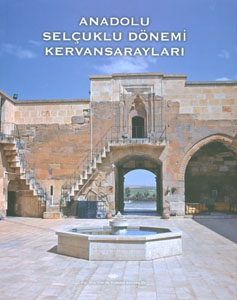 Anadolu Selçuklu dönemi kervansarayları
by
Call Number: NA7850.T9 A53 2007Kervansaraylar Anadolu Selçuklu kültürünü, güç ve kuvvetini en iyi şekilde aksettiren, zamanın beş yıldızlı otelleriydi. Çoğunlukla sultan, vezir ve büyük devlet adamları tarafından yapılan kervansaraylar, kale gibi sağlam, abidevi kesme taştan yapılmış, döneminin süsleme özellikleriyle bezeli, ticaret, sosyal yardım ve kültür müesseseleri idi. Bu yapılar içerisinde zamanın, insan ve hayvanlarının her türlü ihtiyacı karşılayacak; yiyecek içecek, bol su, cami, hamam, kütüphane, baytar, doktor, berber, her çeşit tamir ustası, rehber gibi donanıma sahip idi. Kervansaraylar yalnız Müslüman Türklere değil ticaretle uğraşan tüm yabancılara hizmet vermekteydi. Elinizdeki bu kitap, Anadolu Selçuklu Dönemi Kervansaraylarını tüm yönleriyle ele alan, hem alanın uzmanları ve ilgili konularda uzmanlaşan üniversite üniversite öğrencileri, hem de meraklı okuyucu kesimi için güvenilir bir başvuru kaynağı olarak ortaya konulmaya çalışılmış bir kaynak eserdir.
Anadolu Selçuklu dönemi kervansarayları
by
Call Number: NA7850.T9 A53 2007Kervansaraylar Anadolu Selçuklu kültürünü, güç ve kuvvetini en iyi şekilde aksettiren, zamanın beş yıldızlı otelleriydi. Çoğunlukla sultan, vezir ve büyük devlet adamları tarafından yapılan kervansaraylar, kale gibi sağlam, abidevi kesme taştan yapılmış, döneminin süsleme özellikleriyle bezeli, ticaret, sosyal yardım ve kültür müesseseleri idi. Bu yapılar içerisinde zamanın, insan ve hayvanlarının her türlü ihtiyacı karşılayacak; yiyecek içecek, bol su, cami, hamam, kütüphane, baytar, doktor, berber, her çeşit tamir ustası, rehber gibi donanıma sahip idi. Kervansaraylar yalnız Müslüman Türklere değil ticaretle uğraşan tüm yabancılara hizmet vermekteydi. Elinizdeki bu kitap, Anadolu Selçuklu Dönemi Kervansaraylarını tüm yönleriyle ele alan, hem alanın uzmanları ve ilgili konularda uzmanlaşan üniversite üniversite öğrencileri, hem de meraklı okuyucu kesimi için güvenilir bir başvuru kaynağı olarak ortaya konulmaya çalışılmış bir kaynak eserdir. -
An outline of Turkish architecture in the Middle Ages by
Call Number: NA1363 .A4713 1990 -
 Along ancient trade routes : Seljuk caravanserais and landscapes in Central Anatolia
by
Call Number: DS327.7 .A83 1996
Along ancient trade routes : Seljuk caravanserais and landscapes in Central Anatolia
by
Call Number: DS327.7 .A83 1996 -
Architecture and Landscape in Medieval Anatolia, 1100-1500 by
Call Number: NA1363 .A73 2017ISBN: 9781474411295Publication Date: 2017-04-01Anatolia was home to a large number of polities in the medieval period. Given its location at the geographical and chronological juncture between Byzantines and the Ottomans, its story tends to be read through the Seljuk experience. This obscures the multiple experiences and spaces of Anatolia under the Byzantine empire, Turko-Muslim dynasties contemporary to the Seljuks, the Mongol Ilkhanids, and the various beyliks of eastern and western Anatolia.This book looks beyond political structures and towards a reconsideration of the interactions between the rural and the urban; an analysis of the relationships between architecture, culture and power; and an examination of the region’s multiple geographies. In order to expand historiographical perspectives it draws on a wide variety of sources (architectural, artistic, documentary and literary), including texts composed in several languages (Arabic, Armenian, Byzantine Greek, Persian and Turkish).Original in its coverage of this period from the perspective of multiple polities, religions and languages, this volume is also the first to truly embrace the cultural complexity that was inherent in the reality of daily life in medieval Anatolia and surrounding regions. -
 Anadolu Toprağının Hazinesi Çini: Selçuklu ve Beylikler Çağı Çinileri
by
Call Number: NK4670.7.T9 A751 2007Kitapta Selçuklu ve Beylikler Dönemi'ne ilişkin kaplamalık malzeme olarak çininin öyküsü, en yeni arkeolojik kazılarda bulunmuş pek çok çini örneğiyle birlikte ilk kez yayınlanıyor. Kitapta, Kubad Abad Saray kazılarında ortaya çıkan seramik depodaki çiniler hakkında fotoğraflar ve bilgiler yer alıyor.
Anadolu Toprağının Hazinesi Çini: Selçuklu ve Beylikler Çağı Çinileri
by
Call Number: NK4670.7.T9 A751 2007Kitapta Selçuklu ve Beylikler Dönemi'ne ilişkin kaplamalık malzeme olarak çininin öyküsü, en yeni arkeolojik kazılarda bulunmuş pek çok çini örneğiyle birlikte ilk kez yayınlanıyor. Kitapta, Kubad Abad Saray kazılarında ortaya çıkan seramik depodaki çiniler hakkında fotoğraflar ve bilgiler yer alıyor. -
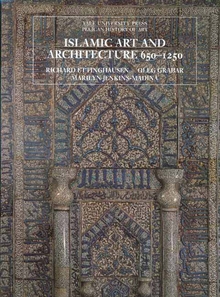 The Art and Architecture of Islam, 650-1250
by
Call Number: N6260 .E79 1991ISBN: 0140561595Publication Date: 1988-01-05This richly illustrated book provides an unsurpassed overview of Islamic art and architecture from the seventh to the thirteenth centuries, a time of the formation of a new artistic culture and its first, medieval, flowering in the vast area from the Atlantic to India. Inspired by Ettinghausen and Grabar’s original text, this book has been completely rewritten and updated to take into account recent information and methodological advances.The volume focuses special attention on the development of numerous regional centers of art in Spain, North Africa, Egypt, Syria, Anatolia, Iraq, and Yemen, as well as the western and northeastern provinces of Iran. It traces the cultural and artistic evolution of such centers in the seminal early Islamic period and examines the wealth of different ways of creating a beautiful environment. The book approaches the arts with new classifications of architecture and architectural decoration, the art of the object, and the art of the book.With many new illustrations, often in color, this volume broadens the picture of Islamic artistic production and discusses objects in a wide range of media, including textiles, ceramics, metal, and wood. The book incorporates extensive accounts of the cultural contexts of the arts and defines the originality of each period. A final chapter explores the impact of Islamic art on the creativity of non-Muslims within the Islamic realm and in areas surrounding the Muslim world.
The Art and Architecture of Islam, 650-1250
by
Call Number: N6260 .E79 1991ISBN: 0140561595Publication Date: 1988-01-05This richly illustrated book provides an unsurpassed overview of Islamic art and architecture from the seventh to the thirteenth centuries, a time of the formation of a new artistic culture and its first, medieval, flowering in the vast area from the Atlantic to India. Inspired by Ettinghausen and Grabar’s original text, this book has been completely rewritten and updated to take into account recent information and methodological advances.The volume focuses special attention on the development of numerous regional centers of art in Spain, North Africa, Egypt, Syria, Anatolia, Iraq, and Yemen, as well as the western and northeastern provinces of Iran. It traces the cultural and artistic evolution of such centers in the seminal early Islamic period and examines the wealth of different ways of creating a beautiful environment. The book approaches the arts with new classifications of architecture and architectural decoration, the art of the object, and the art of the book.With many new illustrations, often in color, this volume broadens the picture of Islamic artistic production and discusses objects in a wide range of media, including textiles, ceramics, metal, and wood. The book incorporates extensive accounts of the cultural contexts of the arts and defines the originality of each period. A final chapter explores the impact of Islamic art on the creativity of non-Muslims within the Islamic realm and in areas surrounding the Muslim world. -
 Alanya (Ala'iyya)
by
Call Number: DS51.A29 L79 1958
Alanya (Ala'iyya)
by
Call Number: DS51.A29 L79 1958 -
Anadolu Selçuklu mimarisinde yazının dekoratif eleman olarak kullanılışı by
Call Number: NA3565.A1 S24 1977 -
 Turkish Islamic architecture in Seljuk and Ottoman times, 1071-1923
by
Call Number: NA1465 .U53 1970
Turkish Islamic architecture in Seljuk and Ottoman times, 1071-1923
by
Call Number: NA1465 .U53 1970 -
 İktidar imgeleri : Sinop içkalesindeki 1215 tarihli Selçuklu yazıtları : James Crow'un bölümü ile Öktay Özel, A.C.S Peacock, Adrian Saunders ve W.M. Thackston, Jr.'ın katkılarıyla
by
Call Number: DS156.S6 R420 2014ISBN: 9786055250287Bu kitap, Sinop içkalesindeki Selçuklu yazıtlarını yeniden gündeme getiriyor ve inceliyor. İlk defa geçen yüzyılın başında yayımlanan bu yazıtlar, Selçuklu Sultanlığı’nın on üçüncü yüzyıldaki önemli biçimlenme dönemine ait kâtibi, idari ve mimari pratiklere bir pencere açıyor. Sinop içkalesindeki tümü de 1215’in yazında beş aylık bir dönemde yapılan on altı yazıt, Selçuklu elitinin iş başında olduğu; devlet ve makam özlem ve idealleriyle birleşen, çatışan bireysel ve hizbi rekabetler ile idari değişikliklere bir bakış imkânı sağlıyor bize. Kitap, daha önce yayımlanan versiyonları düzeltiyor ve kazınmış ana sultan yazıtının ilk defa bir okumasını sunuyor. Katkıda bulunanlar, Selçuklu Anadolusu’nda türünün ilk örneği olan Farsça nazım yazıtı ve bilinen tek Selçuklu Arapça-Yunanca ikidilli yazıtı tahlil ediyorlar.Yazıtların derinlemesine yeniden okunmasına ve analizine ek olarak bu kitap, mimari bağlamı da inceliyor. Selçuklu devletine hizmet eden, sonradan Alanya’daki ünlü Kızıl Kule’yi inşa eden Suriyeli askeri mimar Ebû Alî el-Halebî’nin ilk imzalı işi de bu incelemeye dahil ediliyor. Kitap, sadece Selçuklu mimari pratiğine yeni bir analiz katmakla kalmıyor, ayrıca içkalenin mimarisini yeniden değerlendiriyor. Ortaçağ Anadolusu’nun en görkemli örneklerinden biri olan Sinop içkalesi, Bizans dönemine tarihlendiriliyor.
İktidar imgeleri : Sinop içkalesindeki 1215 tarihli Selçuklu yazıtları : James Crow'un bölümü ile Öktay Özel, A.C.S Peacock, Adrian Saunders ve W.M. Thackston, Jr.'ın katkılarıyla
by
Call Number: DS156.S6 R420 2014ISBN: 9786055250287Bu kitap, Sinop içkalesindeki Selçuklu yazıtlarını yeniden gündeme getiriyor ve inceliyor. İlk defa geçen yüzyılın başında yayımlanan bu yazıtlar, Selçuklu Sultanlığı’nın on üçüncü yüzyıldaki önemli biçimlenme dönemine ait kâtibi, idari ve mimari pratiklere bir pencere açıyor. Sinop içkalesindeki tümü de 1215’in yazında beş aylık bir dönemde yapılan on altı yazıt, Selçuklu elitinin iş başında olduğu; devlet ve makam özlem ve idealleriyle birleşen, çatışan bireysel ve hizbi rekabetler ile idari değişikliklere bir bakış imkânı sağlıyor bize. Kitap, daha önce yayımlanan versiyonları düzeltiyor ve kazınmış ana sultan yazıtının ilk defa bir okumasını sunuyor. Katkıda bulunanlar, Selçuklu Anadolusu’nda türünün ilk örneği olan Farsça nazım yazıtı ve bilinen tek Selçuklu Arapça-Yunanca ikidilli yazıtı tahlil ediyorlar.Yazıtların derinlemesine yeniden okunmasına ve analizine ek olarak bu kitap, mimari bağlamı da inceliyor. Selçuklu devletine hizmet eden, sonradan Alanya’daki ünlü Kızıl Kule’yi inşa eden Suriyeli askeri mimar Ebû Alî el-Halebî’nin ilk imzalı işi de bu incelemeye dahil ediliyor. Kitap, sadece Selçuklu mimari pratiğine yeni bir analiz katmakla kalmıyor, ayrıca içkalenin mimarisini yeniden değerlendiriyor. Ortaçağ Anadolusu’nun en görkemli örneklerinden biri olan Sinop içkalesi, Bizans dönemine tarihlendiriliyor. -
 Bitlis yapılarında Selçuklu Rönesansı
by
Call Number: NA1371.B57 A75 1971
Bitlis yapılarında Selçuklu Rönesansı
by
Call Number: NA1371.B57 A75 1971 -
Anadolu Selçuklu dönemi sanatı bibliyografyası by
Call Number: N7163 .D87 1994 -
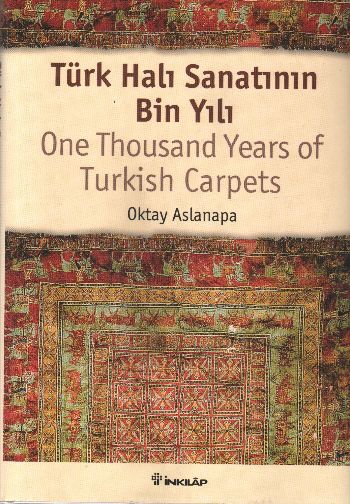 Türk halı sanatı'nın bin yılı
by
Call Number: NK2865.A1 A784 1987Dünya medeniyetine Türklerin bir hediyesi olan "Halı Sanatı", başından beri sıkı sıkıya Türklerin Orta Asya'dan batıya doğru gelişen göç serüvenlerine bağlı olarak gelişmiştir. Erken Devir Türk Halıları'ndan Selçuklu ve Osmanlı Halıları'na, 16. ve 17. Yüzyıl Klasik Devir Türk Halı Sanatı ve Saray Halıları'ndan Seccadeler'e dek Türk Halı Sanatı'nın gelişimini detaylı olarak ortaya koyan bu kitap, konuyla ilgil önemli bir kaynak niteliğini taşımaktadır.
Türk halı sanatı'nın bin yılı
by
Call Number: NK2865.A1 A784 1987Dünya medeniyetine Türklerin bir hediyesi olan "Halı Sanatı", başından beri sıkı sıkıya Türklerin Orta Asya'dan batıya doğru gelişen göç serüvenlerine bağlı olarak gelişmiştir. Erken Devir Türk Halıları'ndan Selçuklu ve Osmanlı Halıları'na, 16. ve 17. Yüzyıl Klasik Devir Türk Halı Sanatı ve Saray Halıları'ndan Seccadeler'e dek Türk Halı Sanatı'nın gelişimini detaylı olarak ortaya koyan bu kitap, konuyla ilgil önemli bir kaynak niteliğini taşımaktadır. -
 Selçuklu öncesi ve Selçuklu dönemi Anadolu mimarisinde tuğla kullanımı
by
Call Number: NA1363 .B35 1981
Selçuklu öncesi ve Selçuklu dönemi Anadolu mimarisinde tuğla kullanımı
by
Call Number: NA1363 .B35 1981 -
-
Kubad-Abad Sarayında Selçuklu Cam Sanatı by
Call Number: NK5108.9 U97 2013ISBN: 9789751625700Cam, uygarlık tarihinde önemli yeri olan bir malzemedir. Bu ilgi çekici malzemenin kimyasal yöntemlerle elde edilmesinden günümüze kadar uzanan tarihinin büyük bir bölümü incelenmiş görünmekle birlikte; bazı dönemler üzerinde yeterince araştırmanın yapılmadığı ya da yapılamadığı da bir gerçektir. Anadolu Selçuklu dönemi bunlardan birisidir. Türkiye’de Ortaçağ’a yönelik kazılar içerisinde sistematik yapılan ve süreklilik gösteren Kubad-Abad kazılarında ortaya çıkarılan cam malzemeler, yoğunluğu ve çeşitliliğiyle, dönemin camcılığına ışık tutmaktadır. -
 Anadolu Selçuklu Eserleri Fotoğraf Albümü
by
Call Number: NA1363 .K37 2010ISBN: 9786056038051Türkiye Selçukluları, Anadolu tarihine aydınlık sayfalar açan ilk Türk devletlerinden birisidir. Değişik coğrafi ve kültürel ortamlardan geçip gelerek bu toprakları yurt tutmuşlar ve Türk mimarlık tarihinin eşsiz eserlerini ortaya koymuşlardır.
Anadolu Selçuklu Eserleri Fotoğraf Albümü
by
Call Number: NA1363 .K37 2010ISBN: 9786056038051Türkiye Selçukluları, Anadolu tarihine aydınlık sayfalar açan ilk Türk devletlerinden birisidir. Değişik coğrafi ve kültürel ortamlardan geçip gelerek bu toprakları yurt tutmuşlar ve Türk mimarlık tarihinin eşsiz eserlerini ortaya koymuşlardır.


